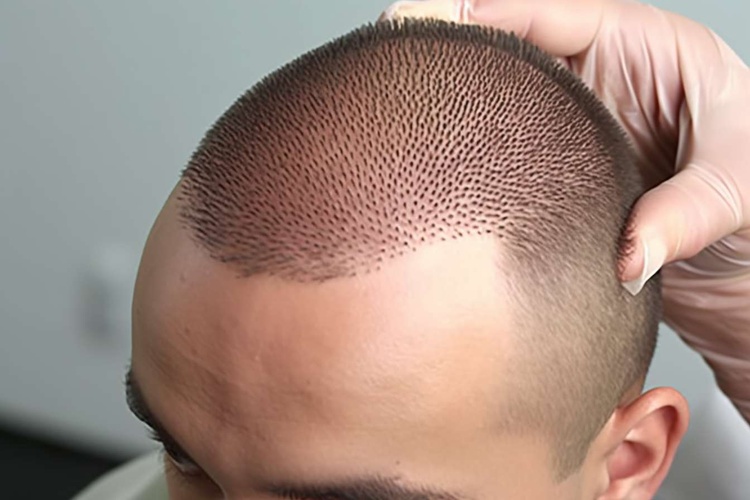Hair Transplantation: A Comprehensive Guide for Women and Men
Hair transplantation has become an increasingly popular solution for those experiencing hair loss, offering hope and confidence to both women and men. This advanced cosmetic procedure has evolved significantly over the years, providing natural-looking results and addressing various types of hair loss, including eyebrow restoration. In this comprehensive guide, we'll explore the world of hair transplantation, its benefits, and what to expect when considering this transformative procedure.

The two main techniques used in hair transplantation are Follicular Unit Transplantation (FUT) and Follicular Unit Extraction (FUE). FUT involves removing a strip of skin containing hair follicles from the donor area, while FUE extracts individual follicular units directly from the scalp. Both methods aim to provide natural-looking results by strategically placing the transplanted hair to mimic the patient’s natural hair growth pattern.
Can women benefit from hair transplantation?
While hair transplantation is often associated with male pattern baldness, women can also greatly benefit from this procedure. Female pattern hair loss affects millions of women worldwide, and hair transplantation can be an effective solution for restoring hair density and coverage.
Women experiencing thinning hair, receding hairlines, or bald spots may be suitable candidates for hair transplantation. However, it’s essential to consult with a specialized hair restoration clinic to determine the underlying cause of hair loss and the most appropriate treatment plan. In some cases, women may benefit from a combination of hair transplantation and other hair restoration techniques to achieve optimal results.
What are the benefits of eyebrow transplantation?
Eyebrow transplantation has gained popularity in recent years as a solution for those with sparse or thin eyebrows. This specialized form of hair transplantation can help create fuller, more defined eyebrows that enhance facial features and restore a youthful appearance.
The procedure involves transplanting hair follicles from the scalp to the eyebrow area, carefully placing them to mimic the natural growth pattern of eyebrow hair. Eyebrow transplantation can benefit individuals who have naturally thin eyebrows, those who have over-plucked or over-waxed their eyebrows, or those who have lost eyebrow hair due to medical conditions or trauma.
How to choose the right hair transplant clinic?
Selecting the right hair transplant clinic is crucial for achieving optimal results and ensuring a safe, comfortable experience. When researching clinics, consider the following factors:
-
Experience and expertise: Look for clinics with a proven track record in hair transplantation, particularly for your specific needs (e.g., women’s hair restoration or eyebrow transplantation).
-
Qualifications: Ensure the clinic’s surgeons are board-certified and have specialized training in hair restoration techniques.
-
Before and after photos: Review the clinic’s portfolio of previous patients to assess the quality and naturalness of their results.
-
Technology and techniques: Inquire about the latest technologies and methods used by the clinic to ensure you’re receiving state-of-the-art treatment.
-
Patient reviews and testimonials: Research online reviews and ask for patient references to gauge overall satisfaction with the clinic’s services.
-
Consultation process: A reputable clinic should offer a thorough consultation to assess your individual needs and provide personalized treatment recommendations.
What is the typical cost of hair transplantation?
The cost of hair transplantation can vary significantly depending on factors such as the extent of hair loss, the technique used, and the clinic’s location and reputation. Here’s a general overview of hair transplantation costs:
| Procedure Type | Average Cost Range | Factors Affecting Price |
|---|---|---|
| FUT (strip method) | $4,000 - $15,000 | Number of grafts, clinic location, surgeon expertise |
| FUE | $4,000 - $20,000 | Number of grafts, manual vs. robotic extraction, clinic reputation |
| Eyebrow Transplantation | $3,000 - $8,000 | Number of hairs needed, clinic location, surgeon expertise |
Prices, rates, or cost estimates mentioned in this article are based on the latest available information but may change over time. Independent research is advised before making financial decisions.
It’s important to note that while cost is a factor, it shouldn’t be the sole determining factor when choosing a hair transplant clinic. The quality of results and the surgeon’s expertise should be prioritized to ensure the best possible outcome.
What should you expect during and after the procedure?
Hair transplantation is typically performed as an outpatient procedure under local anesthesia. The duration can range from 4 to 8 hours, depending on the extent of the transplantation. During the procedure, you’ll be awake but comfortable, and many patients find they can relax, read, or watch TV.
After the procedure, you may experience some swelling and discomfort in the treated areas. Your surgeon will provide detailed aftercare instructions, which may include:
-
Avoiding strenuous activities for a few days
-
Sleeping with your head elevated
-
Gently washing the transplanted area as directed
-
Taking prescribed medications to manage discomfort and reduce the risk of infection
It’s important to have realistic expectations about the results. Transplanted hair typically sheds within the first few weeks, which is normal. New hair growth usually begins within 3 to 4 months, with full results visible after 12 to 18 months.
Hair transplantation offers a lasting solution for both women and men experiencing hair loss. By understanding the process, benefits, and considerations involved, you can make an informed decision about whether this procedure is right for you. Remember to consult with a reputable hair transplant clinic to discuss your individual needs and develop a personalized treatment plan for achieving your hair restoration goals.






